Strawberry Gigantella: large-fruited and high-yielding strawberry variety
Gigantella is a variety bred by breeders from Holland. Her berries are just huge. The mass of berries reaches 80-100 g, they are very sweet, have a pineapple aroma and good transportability. They are scarlet with white splashes.
Content
- Description and features of the variety
- Growing seedlings and transplanting into open ground
- Care Tips
- Diseases and pests: control and prevention
Description and features of the variety
Bushes at strawberry tall and powerful, they grow up to 0.5 m, they are the same in width. The leaves are large, corrugated, green. Peduncles grow 20-30 pieces, on one peduncle of 6-8 flowers. It has an average ripening period. The variety is frost resistant.
With good care, up to 3 kg of berries can be harvested from the bush.
At the first harvest, the berries weigh up to 110 g, after which they pick smaller berries weighing 40–60 g. When frozen, the berries do not lose their taste.
Growing seedlings and transplanting into open ground
Planting seeds:
- Seed strawberries are best sown in February or March.
- The soil mixture is done as follows: 3 parts of sand and 5 parts of humus are taken. The mixture is advised to be ignited in the oven, which has a temperature of 100 degrees.
- Then pour the earth into a pot, water and tamp a little.
- Pour on top the seeds and some snow, after 5 days put the pot in a cold place with a temperature of 0 - +5 ° C.
- Then transfer the pot to a warm place and until the seeds germinate, provide them with a temperature of + 20-24 ° C.
- When 1-2 true leaves grow, cut out the seedlings and place them in a room with a temperature of + 14-16 ° C.
In early May, when the seedlings grow 6 true leaves, they are planted in open ground. Most of all, strawberries like loamy soil with humus or peat. It is recommended to plant strawberries in the place where the beans used to grow.
Strawberries prefer fertile soil with neutral characteristics.
For 1 sq. M. pour 1 bucket of humus and 0.5-1 cups of ash, then dig up the earth. For 1 sq. M. plant 4 bushes. In the first year, you do not need to feed strawberries, but you need to regularly and abundantly to water.
Care Tips
Remove the dry leaves as soon as the snow melts. Remove the mulch layer as well. But if you do not go to remove the layer of mulch, then carefully loosen the soil between the rows by 7 cm. In early spring, to protect against diseases, spray the bushes with a solution of copper sulfate.
After 14 days, sprinkle a handful of ash around the bushes. After loosening, it is advised to mulch the bushes with straw, pine needles, leaves, sawdust... When the leaves begin to bloom on the strawberries under the bushes, pour a solution of manure with ammonium sulfate. In early May, fertilize the bushes with complex mineral fertilizers... Water the bushes once a week in the morning with warm, settled water. Before blooming flower buds, the strawberries are thoroughly watered with water, and during flowering it is impossible for the water to get on the flowers, leaves and stems of the plant.
Rules for caring for strawberries gigella:
- weed strawberries constantly
- water once a week
- remove diseased and damaged bushes
- when the berries begin to set, then pour sawdust or straw under the bushes so that the fruits do not rot
- before blooming flower buds feed solution with potassium sulfate and nitrophos
- pick berries
- fertilize the strawberries after picking the berries with a solution of nitrophoska and ash.
- if there is a lot of precipitation, then cover the strawberries with foil
- for a large harvest, regularly cut off the whiskers and shoots.
- it is recommended to sprinkle the mustache with soil for the winter and sprinkle the rotted one on the beds mullein
Strawberry may wither with a lack of moisture. So be sure to water your bushes in the morning or evening. If the strawberry gets enough water, but it still withers, then this means that it was attacked by bears or moles... To eliminate bear insecticides are placed in the holes when planting bushes.
Strawberries can dry out due to fungal diseases. Examine the bushes, if only a few are ill, then tear them out and burn them, if more, spray fungicides.
If strawberries dry up, this means that they are sick with gray rot.
Pick off rotten berries and mulch the bushes with sawdust. Strawberries may turn yellow due to a lack of nitrogen and magnesium in the ground, then pour magnesium sulfate on top, and then pour plenty of water on the bushes. Also dolomite flour contains magnesium, add it. The leaves also turn yellow due to non-infectious chlorosis. In this case, you need to feed the strawberries on the leaves with substances containing iron and watered with warm, settled water. Also, the leaves turn yellow due to viral diseases. They cannot be cured, because of this, do prevention by treating strawberries in spring and autumn with 2-3% Bordeaux liquid.
Diseases and pests: control and prevention
In early spring, the bushes are sprayed with Karate, Arrivo preparations. Onion husks or tobacco are used to protect against fungal diseases. To protect against pests and diseases, an infusion is made from a bucket of hot water (10 l) and chopped horse sorrel. Then leave the composition for 2-3 days, filter and spray.
Common diseases of strawberries:
- White spot (septoria), it can be identified by dark scarlet spots on the leaves, after some time they turn white in the center. Sometimes this is called ramulariasis, with a disease on the leaves there are whitish specks with a burgundy border.
- Brown spot - it is recognized by the fact that the edges of the leaves seem to be burnt, after which black pads are visible on the upper side of the leaf. Preventive measures: strawberries are sprayed with phytosporin in the spring. If the disease has already arisen, then the leaves are sprayed with copper oxychloride or 1% Bordeaux mixture. This is done when the leaves grow back, and also before the flower buds open, after harvest.
- Gray rot, it is visible on the dense brown spots on the berry, which are covered with a fluffy bloom, after the leaves become affected by gray spots.
- Black rot, with it the leaves are covered with black specks. Preventive measures: in the spring, strawberries are sprayed with a solution of 2-4% Bordeaux liquid. After harvesting, the processing is repeated.
- Fusarium wilting - with it, necrosis occurs along the edges of the leaves, then they spread to the entire leaf.
- Phytosporous wilting - with it the leaves have a gray tint, after which they fold.
- Verticillary wilt - old leaves wilt, then this happens to young ones.
To prevent these diseases, before planting, place the rhizomes in a solution of 7 g of 23k agate and 1 liter of water. If the strawberry does get sick, treat it with metaxil.
Strawberry pests:
- Birds. To scare away birds, place pegs with a height of 1 m around the perimeter of the summer cottage and in the aisles. Throw a fine-mesh net on them or pull a string and place a New Year's shiny "rain" on it.
- Slugs. To eliminate slugs, pour beer overnight into low lids, and collect slugs in the morning.
- The weevil is a black-gray small beetle up to 3 mm long. To eliminate the weevil, it is necessary to process strawberries with karbofos, actellik.This is done a week before the start of the blooming of flower buds.
- Beetles. From them, the bushes and the land around them are cultivated in the spring with actellik, karbofos. At other times, you can water the bushes with an infusion of onion peels: pour 1/3 of the onion peel into a bucket, then add water and leave for 5 days. Then pour in another bucket of water and spray with the resulting composition.
- Ticks, spiderwebs and strawberries. In the spring, at the beginning of the growing season, treat the plants with phosphamide, metaphos. Water the bushes in the evening with a hot, 65 ° C, pale solution of potassium permanganate.
- Nematodes. When you plant the seedlings, immerse them in hot water at a temperature of 47-48 ° C for a quarter of an hour.
- Ants. Currently, the stores sell ant bait baits filled with slow-acting poison.
More information can be found in the video:



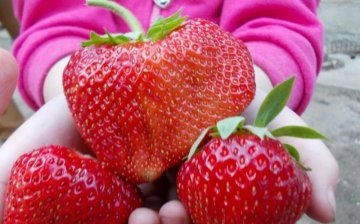
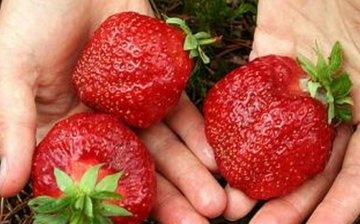
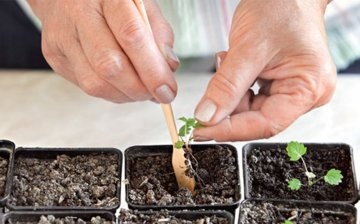


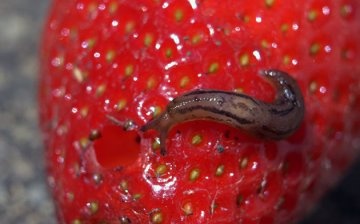






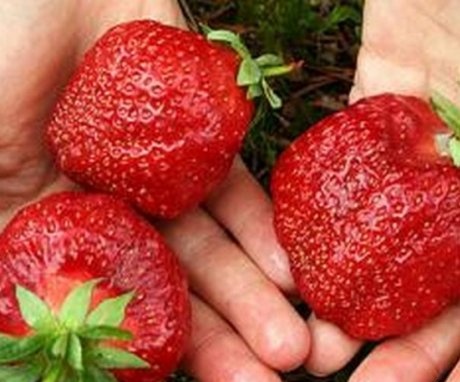
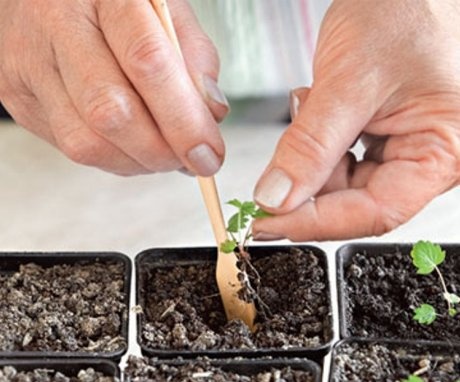

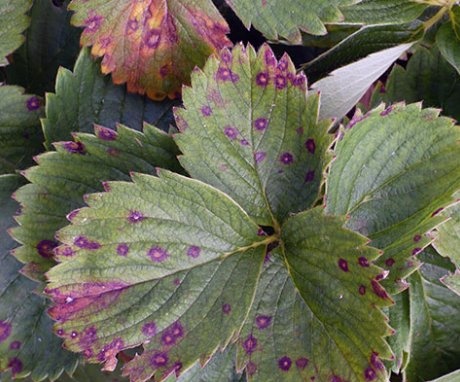
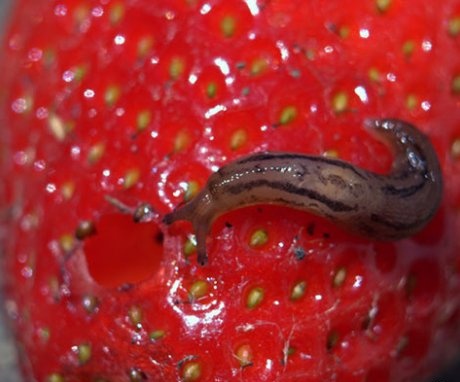
I ordered this strawberry variety, but I planted it late, so it starts bearing fruit only now and the fruits are really big. I hardly water the strawberries, but they feel great.